The sciatic nerve injury model commonly includes the crush injury model and the transection injury model. The sciatic nerve crush model induces marked hyperalgesia in the hind limb on the injured side by mechanically compressing the sciatic nerve. The connective tissue of the nerve affected by the crush is not disrupted, preserving the continuity of the nerve trunk and the integrity of the epineurium, which provides a potential for nerve regeneration.
Experimental Design and Standard Assays
1. Experimental Design

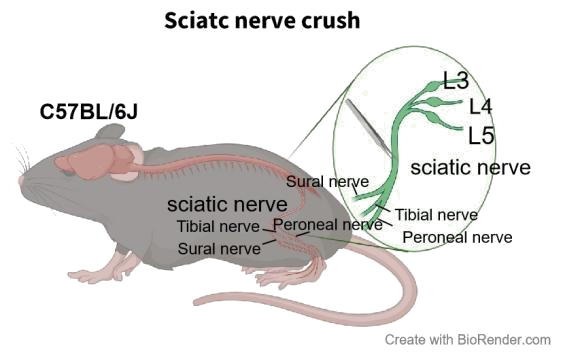
2. Behavioral Test: Von Frey
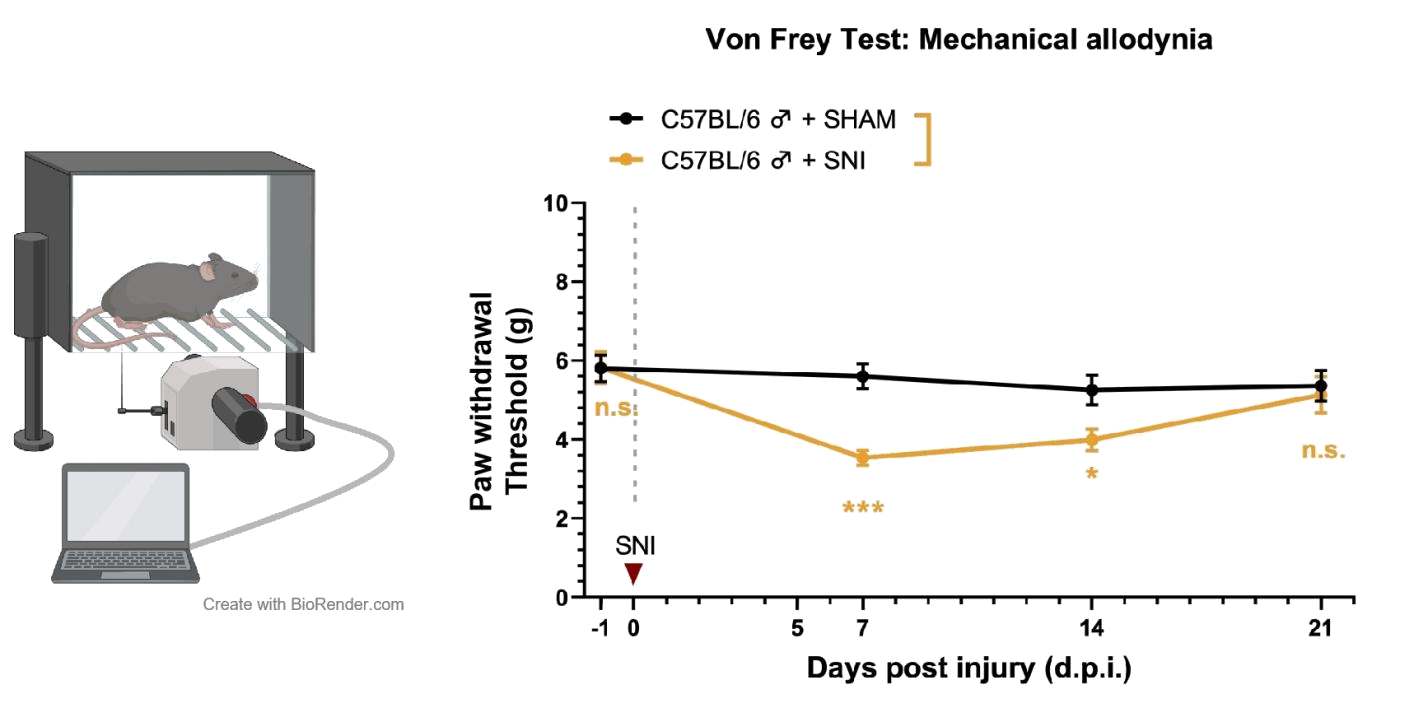
n=10 mice/group, all data represent as MEAN ± SEM, *P<0.05, **P<0.01, ***P<0.001, ****P<0.0001,T-Test
After sciatic nerve crush, the threshold for Von Frey mechanical pain stimuli in mice significantly decreases, but it returns to normal 21 days after injury.
3. Behavioral Test: Gait Analysis
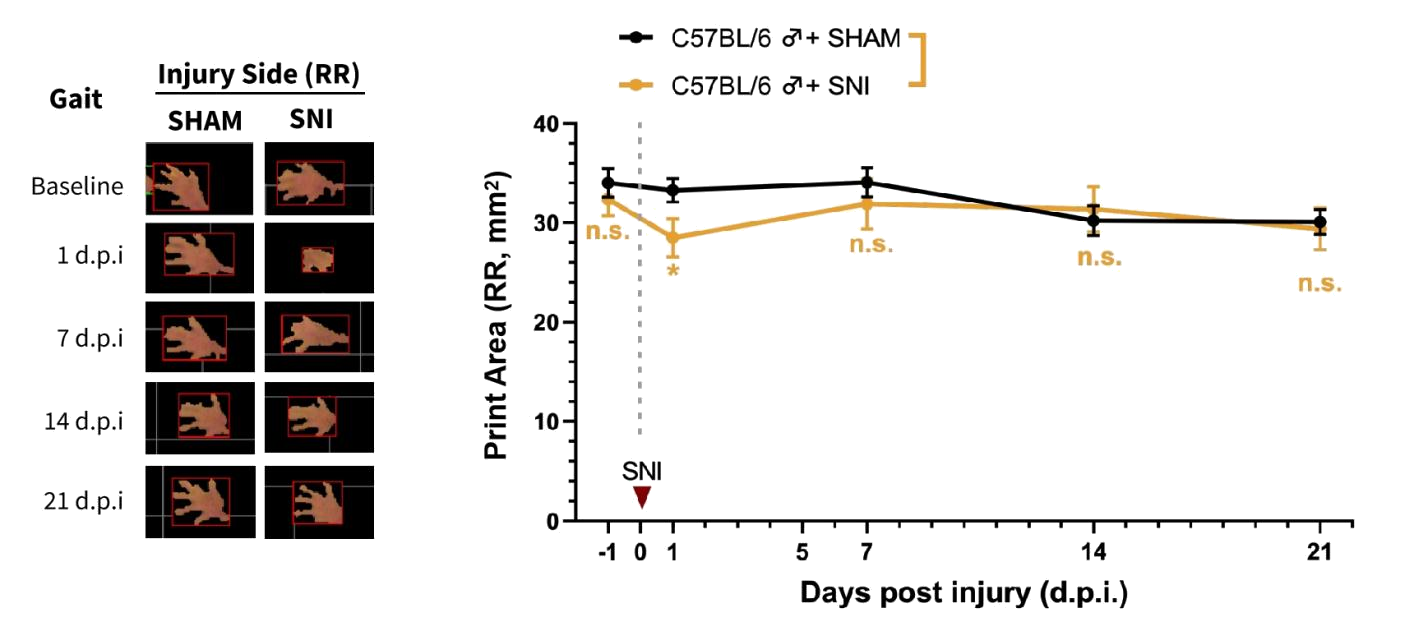
n=10 mice/group, all data represent as MEAN ± SEM, *P<0.05, **P<0.01, ***P<0.001, ****P<0.0001, T-test
FR: Front right limb, FL: Front left limb, RR: Rear right limb, RL: Rear left limb
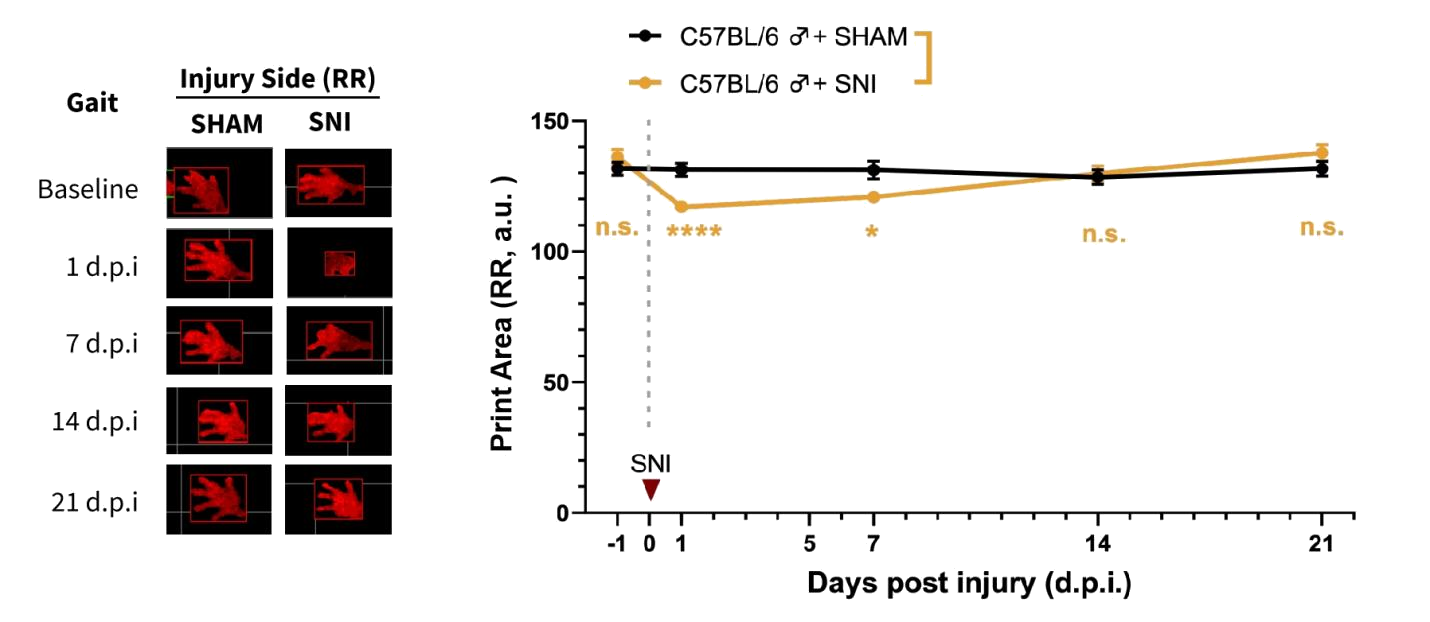
n=10 mice/group, all data represent as MEAN ± SEM, *P<0.05, **P<0.01, ***P<0.001, ****P<0.0001, T-test
FR: Front right limb, FL: Front left limb, RR: Rear right limb, RL: Rear left limb
The footprint area and foot pressure of the injured side of the mouse decrease one day after injury. The footprint area returns to normal after 7 days post-injury, and the foot pressure returns to normal after 14 days post-injury.
4. Molecular: IBA1
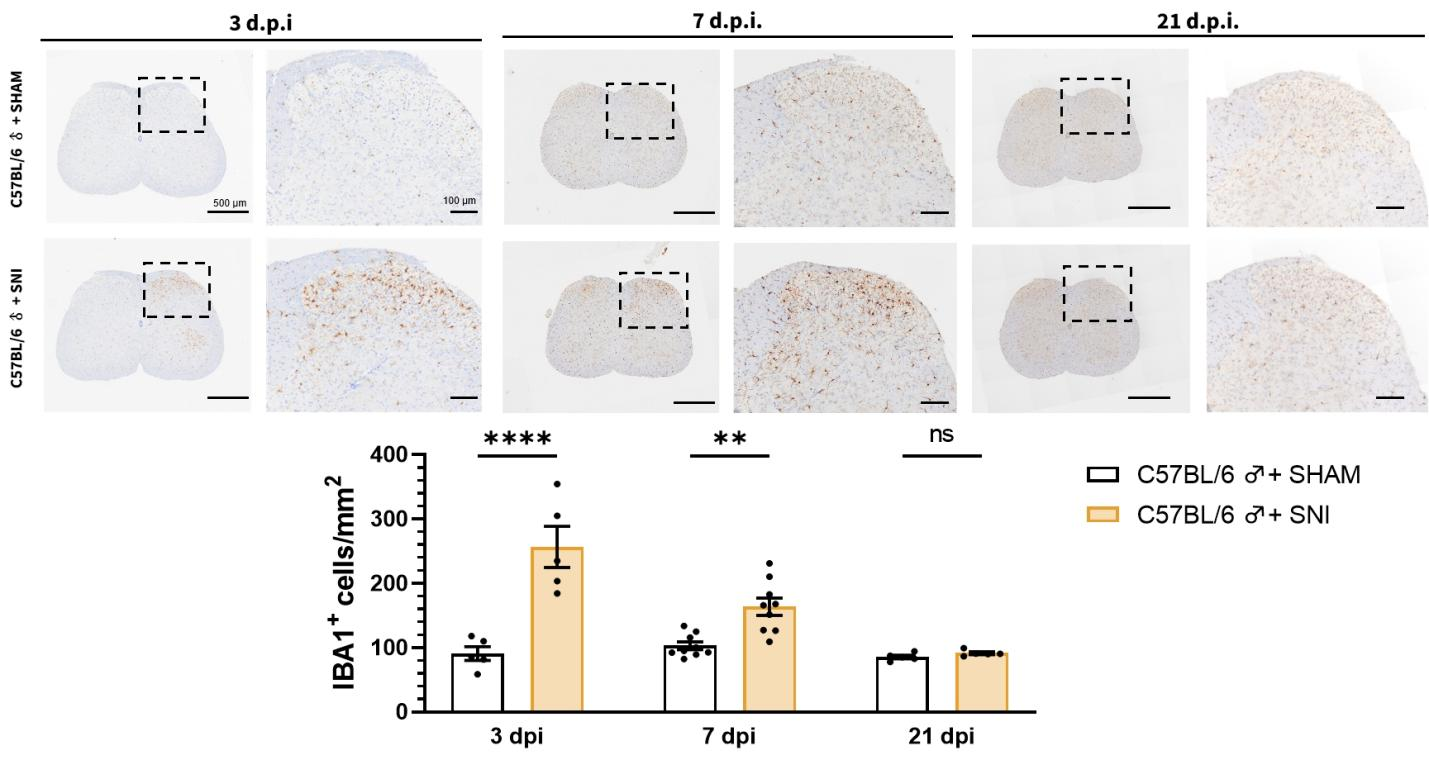
n=5-9 mice/group, all data represent as MEAN ± SEM, *P<0.05,two-way ANOVA
The number of IBA1+ cells in the dorsal horn of the spinal cord of mice induced by sciatic nerve crush increases and returns to normal 21 days after the modeling.
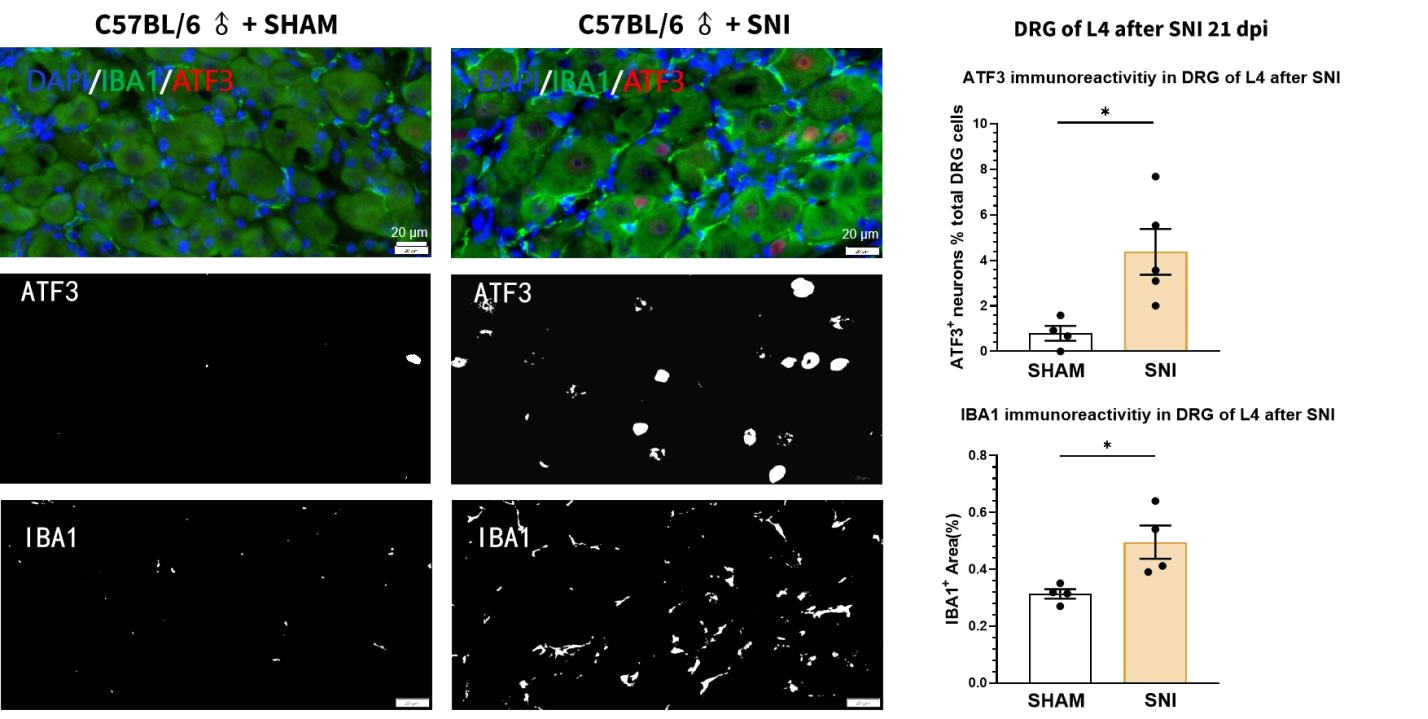
n=4-5 mice/group, all data represent as MEAN ± SEM, *P<0.05 T-test
Activating transcription factor 3 (ATF3) expression is upregulated in the dorsal root ganglia (DRG) of the spinal cord 21 days after sciatic nerve crush modeling.

